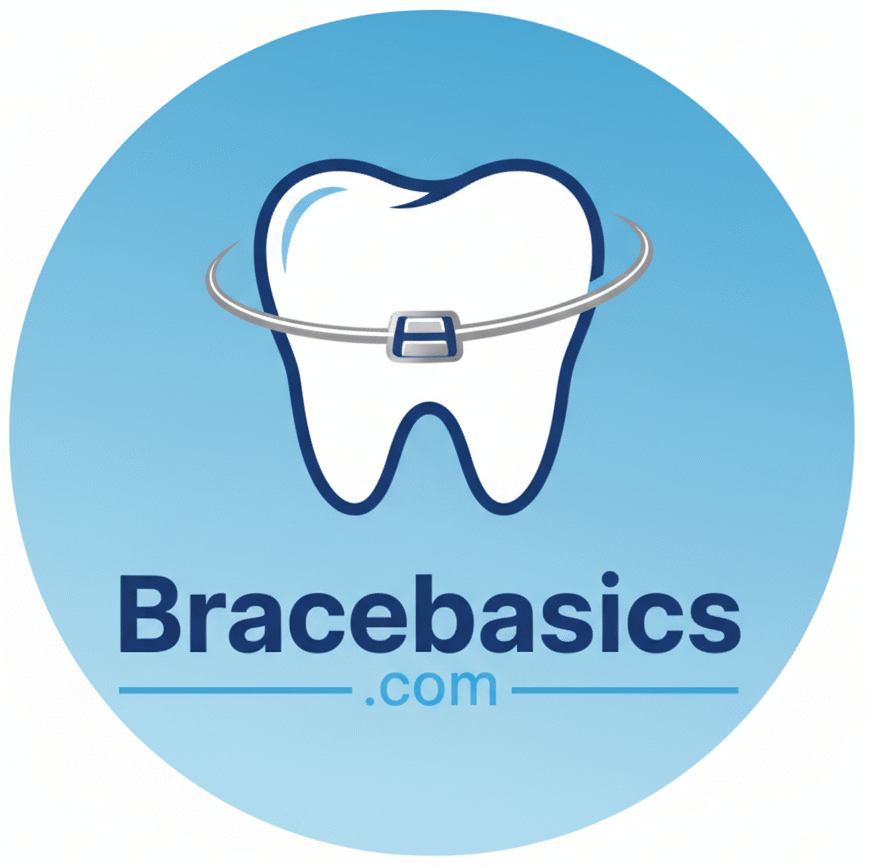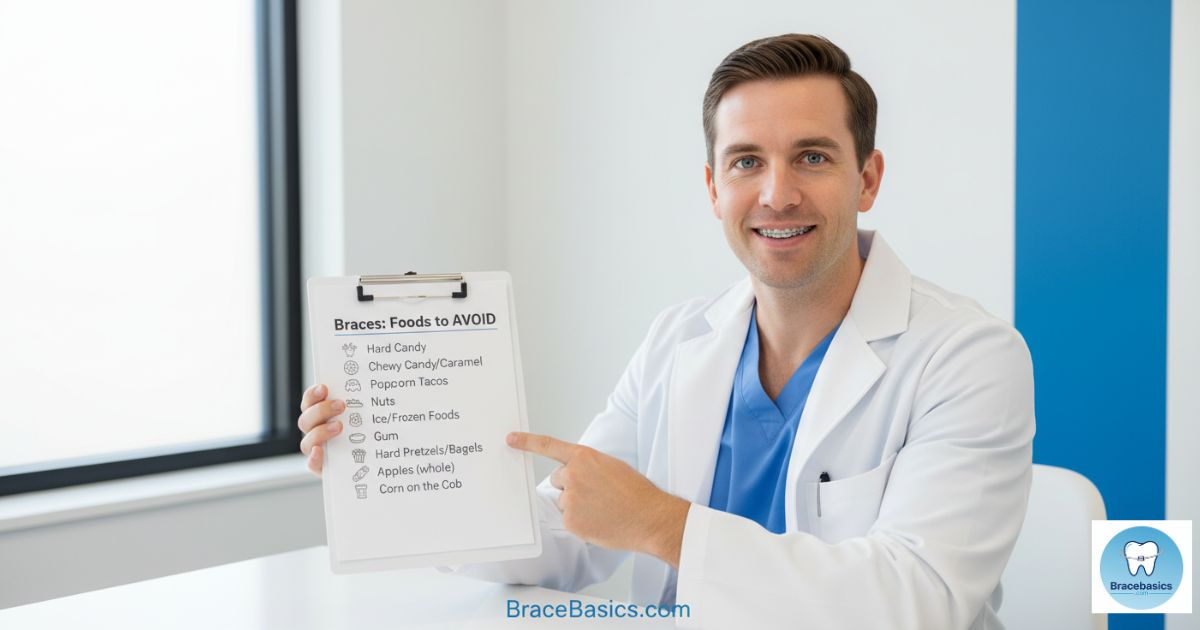Foods You Can Not Eat With Braces are more important to know than most people realize. When you start your orthodontic journey, every bite matters. The foods you choose can either protect your braces or cause painful damage to brackets, wires, and your overall smile progress. Eating the wrong thing may not only cause discomfort but also lead to costly braces repair visits and treatment delays.
Understanding what not to eat with braces helps you avoid broken brackets and wires, maintain good oral hygiene, and keep your orthodontic treatment smooth from start to finish. With the right guidance and braces-safe meals, you can still enjoy delicious food while working toward that beautiful smile you’ve always wanted.
Why You Should Avoid Certain Foods With Braces
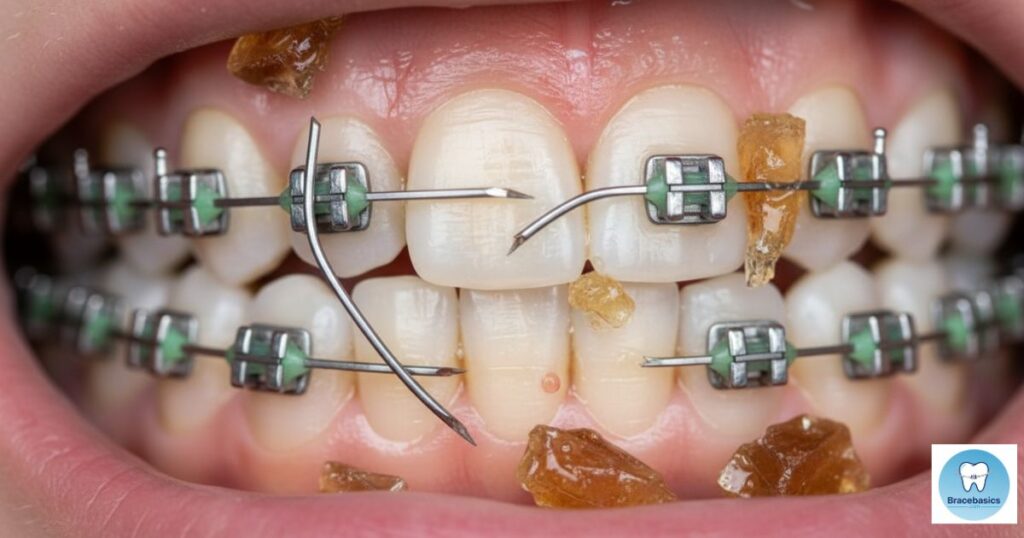
Wearing braces is a big step toward a beautiful smile and better oral health during orthodontic treatment. But what you eat can make or break your progress. Some foods are too sticky, crunchy, or tough for your brackets and wires, and they can cause braces breakage or even delay your orthodontic journey. Think of your braces as a delicate machine — one wrong bite can bend a wire or pop off a bracket, leading to painful repair visits and a longer treatment duration.
Avoiding risky foods isn’t just about saving your metal braces. It’s also about protecting your gums and preventing tooth decay, plaque, tartar, and gingivitis. A smart brace-friendly diet plan helps you chew easily, keeps your orthodontic treatment on track, and ensures you finish with the smile you’ve been waiting for.
How Food Can Damage Brackets and Wires
Every bite matters when you’re eating with braces. Hard snacks or tough foods like bagels, pretzels, popcorn, and nuts can twist your brackets and wires, leading to painful wire damage or even broken brackets and wires. Once a part bends, the entire alignment shifts, forcing your orthodontist to readjust everything. That means extra time, extra cost, and unnecessary braces discomfort relief sessions.
Sticky candies and chewing gum can sneak into tiny spaces around the brackets, pulling them loose when you try to chew. The result? You end up with a loosen bracket, sore mouth, and maybe even a choking hazard if a piece breaks off mid-bite.
Why Sticky Foods Are the Worst Offenders
Sticky foods cling to your metal braces like glue. Caramel, taffy, and sticky candies don’t just get stuck — they wrap around the rubber bands and trap sugary residue near your teeth. That creates a perfect breeding ground for plaque, tooth decay, and gum inflammation. Imagine your braces turning into a candy-coated trap inside your mouth. That’s exactly what happens when you ignore the warning to skip sticky treats.
The Role of Diet in a Smooth Braces Journey
A smart diet keeps your orthodontic treatment running smoothly. Soft, nutrient-rich foods help your teeth move gently without putting strain on your brackets. Eating wisely also prevents mouth sensitivity, discomfort, and pain after braces adjustments. Think of it as fueling your smile — every spoonful matters in building a healthy foundation for your orthodontic journey.
Foods You Can not Eat With Braces
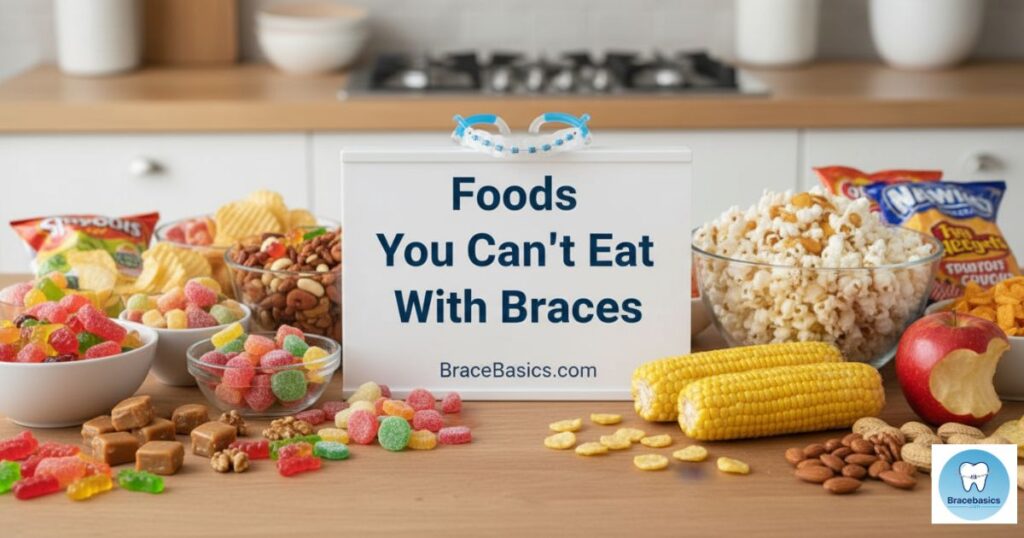
Some foods are absolute no-go’s when it comes to braces maintenance. Ignoring them might cost you time, money, and comfort. Below are common culprits that can ruin your braces-safe diet.
Sticky and Chewy Foods (caramel, gum, taffy)
Sticky snacks like caramel, taffy, and chewing gum grip onto brackets and wires like cement. Once lodged, they’re nearly impossible to remove without professional help. These foods can also pull braces loose or stretch the rubber bands, forcing more frequent repair visits. They’re also full of sugary drinks and sweeteners that increase your risk of tooth decay and gum disease.
Hard and Crunchy Foods (nuts, popcorn, chips)
Popcorn kernels, chips, and nuts are the silent destroyers of braces. A single bite can snap a wire or fracture a bracket. Even tiny fragments can lodge between teeth and cause gum irritation or infection. Orthodontists across the USA consistently warn patients to avoid these to protect their braces and tooth alignment.
| Hard Food | Potential Damage | Safer Alternative |
| Popcorn | Kernel breaks wire | Soft cereal |
| Nuts | Loosens brackets | Peanut butter |
| Chips | Cuts gums | Baked potato slices |
Tough or Chewy Meats (steak, jerky, ribs)
Chewing tough meats like steak, jerky, or ribs puts immense pressure on brackets and wires. It also creates chewing difficulties with braces, making you bite unevenly and risk wire damage. Choose soft fish, ground chicken, or tender tofu instead. They’re easier on your braces and still provide high protein for gum healing.
Foods You Must Bite Into (corn on the cob, apples, burgers)
Anything that demands a strong front bite — like corn on the cob, bagels, or apples — can pop your brackets right off. Even burgers can tug at rubber bands if you bite down too hard. Cut these foods into small, bite-size pieces to protect your orthodontic work and make eating with braces smoother.
Sugary Foods and Drinks (soda, hard candy, energy drinks)
Sugary drinks, energy drinks, and hard candy aren’t just bad for your waistline — they attack your teeth. These foods feed bacteria that create acidic drinks capable of eroding enamel around your brackets. Over time, you’ll see white marks or cavities where tooth brushing couldn’t reach. Stick to braces-friendly drinks like milk or water, and if you must indulge, use a straw to reduce acid contact.
How to Brush Teeth with Braces?
Safe and Braces-Friendly Alternatives
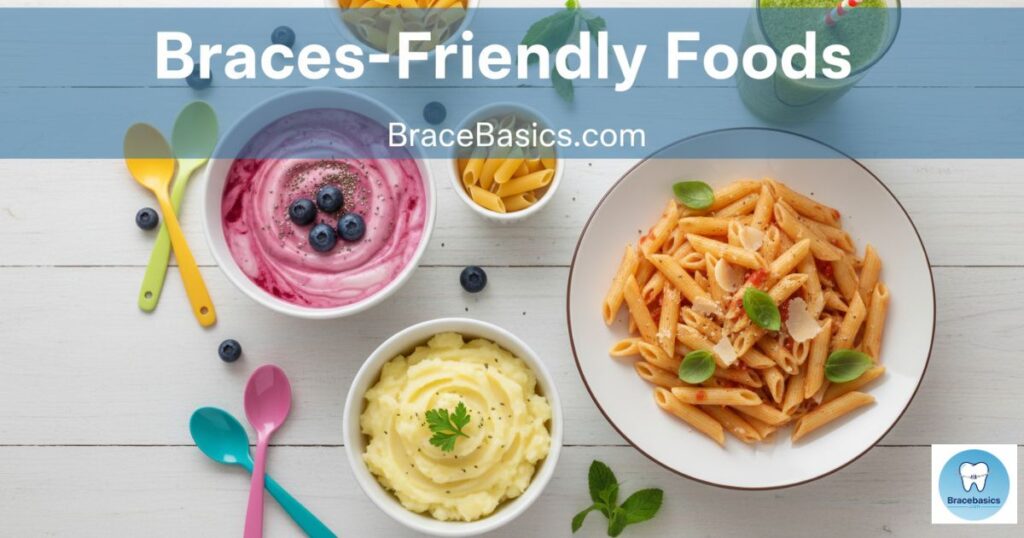
A braces-safe diet doesn’t mean boring meals. You can enjoy plenty of delicious, braces-friendly foods that keep your teeth and gums happy. Here’s how to swap the harmful with the helpful.
Soft Foods to Enjoy (pasta, mashed potatoes, yogurt)
Comfort foods like pasta, yogurt, and mashed potatoes are your new best friends. They’re gentle on brackets and wires, easy to chew, and full of energy. Add soft fruits or cheese for more flavor. These meals also help with mouth sensitivity after braces adjustments.
Smooth Treats and Snacks (ice cream, pudding, smoothies)
Pudding, smoothies, and ice cream are perfect for braces discomfort relief. They cool the mouth and ease soreness after tightening appointments. Avoid hard mix-ins like nuts or candies, and stick to smooth blends that support your braces-friendly diet.
Protein Choices That Won’t Hurt Braces (eggs, soft fish, tofu)
Soft proteins like eggs, tofu, and soft fish strengthen your gums and bones without harming brackets. They’re excellent for post-tightening meals when chewing feels uncomfortable. Protein is vital for tissue repair, keeping your orthodontic treatment healthy and balanced.
Easy Fruits and Veggies (bananas, steamed carrots, berries)
Soft fruits like bananas and berries, and steamed veggies such as carrots, provide essential vitamins for gum health. They’re gentle on metal braces and keep your dental hygiene with braces in check. Avoid raw crunchy vegetables until your treatment ends.
Tips for Eating with Braces
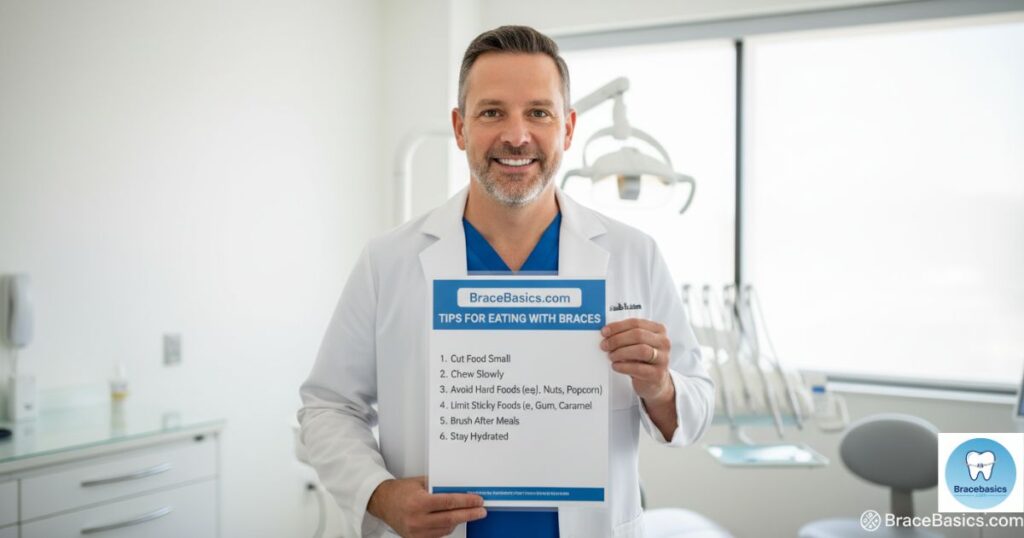
Adjusting your eating habits makes daily life easier and helps maintain braces safety.
Prepare Food in Smaller Pieces
Cutting food into smaller bites prevents wire damage and reduces pressure on your brackets. It also helps you chew evenly, avoiding treatment extension from unnecessary repairs.
Try Softer Cooking Methods (boiling, baking, steaming)
Steaming or boiling softens tough foods without sacrificing flavor. These methods make even chewy meats safe for your braces-safe meals. Roasting also works if the food isn’t overly crisp.
Use Orthodontic Wax for Comfort When Eating
If a bracket or wire feels sharp, cover it with orthodontic wax. This small trick prevents cuts and lets you eat comfortably until your next orthodontic guidance appointment.
What to Eat After Tightening Appointments
After tightening, your mouth may feel sore. Choose soft foods for braces like soup, oatmeal, and rice cereal. These soothe mouth sensitivity and support fast recovery without irritating your brackets.
Importance of Dietary Changes
Changing what you eat protects your braces investment.
Protecting Braces and Wires from Damage
Every meal either strengthens or weakens your braces. Avoiding hard and sticky foods keeps your brackets and wires strong, helping your orthodontic treatment finish on schedule. Prevention always beats braces repair costs.
Preventing Discomfort and Sensitivity
Your mouth is adjusting to new pressure every few weeks. Eating soft, warm foods reduces braces discomfort and helps your gums adapt faster. It’s part of proper caring for braces.
Keeping Teeth Clean and Free from Stains
Sugary foods and acidic drinks can stain enamel. Regular tooth brushing, flossing, and mouthwash maintain bright teeth throughout your orthodontic journey. Use a water flosser to reach under wires for deeper cleaning.
Drinks to Avoid with Braces
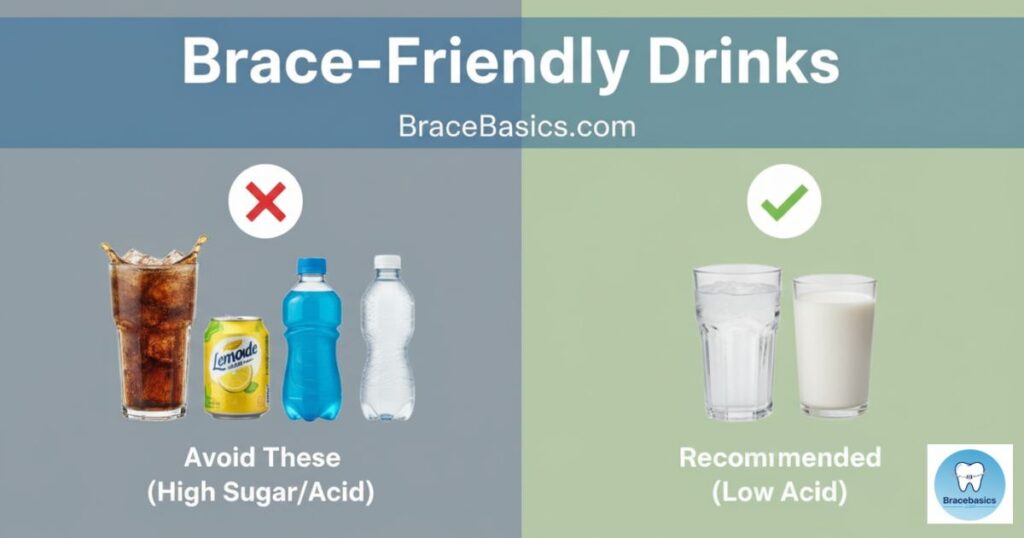
Liquid sugars can be worse than food.
Soda and Fizzy Drinks
Carbonated sodas and acidic drinks weaken enamel around your brackets, leading to tooth decay and stains. Replace them with water or unsweetened juice.
Acidic Beverages Like Lemonade and Sports Drinks
Sports drinks and energy drinks often contain acids that corrode metal braces. If you must drink them, limit frequency and rinse your mouth afterward.
How to Drink Safely with a Straw
Using a straw helps bypass your teeth and braces, reducing contact with acids and sugars. This small habit greatly aids in gum disease prevention and hygiene tips for braces.
FAQs
What food can’t I eat with braces?
You should avoid anything that’s hard, sticky, or chewy because these can break your brackets or bend your wires. Skip foods like popcorn, chewing gum, hard candy, nuts, and corn on the cob. These cause braces breakage or get trapped between teeth, leading to plaque, tartar, and tooth decay. Instead, choose braces-friendly foods such as soft fruits, yogurt, or mashed potatoes to protect your braces and maintain good oral hygiene during orthodontic treatment.
What to eat in the first week of braces?
During your first week, your mouth may feel a bit sore or sensitive. It’s best to stick with soft foods for braces like soups, oatmeal, rice cereal, mashed potatoes, smoothies, and yogurt. These are gentle on your brackets and wires and help reduce braces discomfort relief after adjustments. Avoid crunchy or chewy meals that require a lot of pressure while chewing. This helps your mouth adjust comfortably to your new orthodontic treatment.
Can I eat Chick-fil-A with braces?
Yes, you can enjoy Chick-fil-A — but choose carefully! Go for soft menu options like nuggets, fries, mac & cheese, or grilled sandwiches. Avoid biting directly into crispy chicken sandwiches or bagels, since those can harm your brackets or cause wire damage. Cutting your food into small, bite-sized pieces makes eating easier and safer during your braces journey.
Can I eat anything I want with braces?
Not quite. While you can enjoy most foods, you must avoid anything that could damage your braces or make cleaning difficult. Hard foods, sticky candies, and acidic drinks can lead to broken brackets, gum disease, and treatment extension. However, with the right braces-safe diet, you can still eat a wide variety of tasty, soft, and nutritious foods without slowing your orthodontic progress or risking your beautiful smile.
Can I Eat Pizza with Braces?
Yes, but only soft pizza with no crunchy crust. Hard edges can bend wires or cause braces breakage.
Can I Eat Chocolate or Ice Cream?
Soft chocolate and ice cream are safe in moderation. Avoid hard candy or frozen chunks that could chip brackets.
What Snacks Are Safe for Braces?
Choose braces-friendly snacks like yogurt, soft cereal, and smoothies. Skip nuts, popcorn, and anything sticky.
How Can I Prevent Food from Getting Stuck?
Brush after every meal and rinse with mouthwash. A floss threader or water flosser removes debris between brackets.
What Should I Do if a Bracket Breaks?
Cover sharp edges with orthodontic wax and contact your pediatric orthodontist or local orthodontist immediately. Don’t try fixing it yourself.
Conclusion
A smart diet means fewer orthodontic emergencies and faster results. Avoid foods that damage braces, focus on braces-friendly foods, and maintain your braces-safe diet for smoother progress. Every meal is a step closer to your self-confidence, self-esteem, and that beautiful smile you deserve.
References:
- American Association of Orthodontists
- Colgate Oral Health Center
- Cleveland Clinic – Braces Care
- American Dental Association
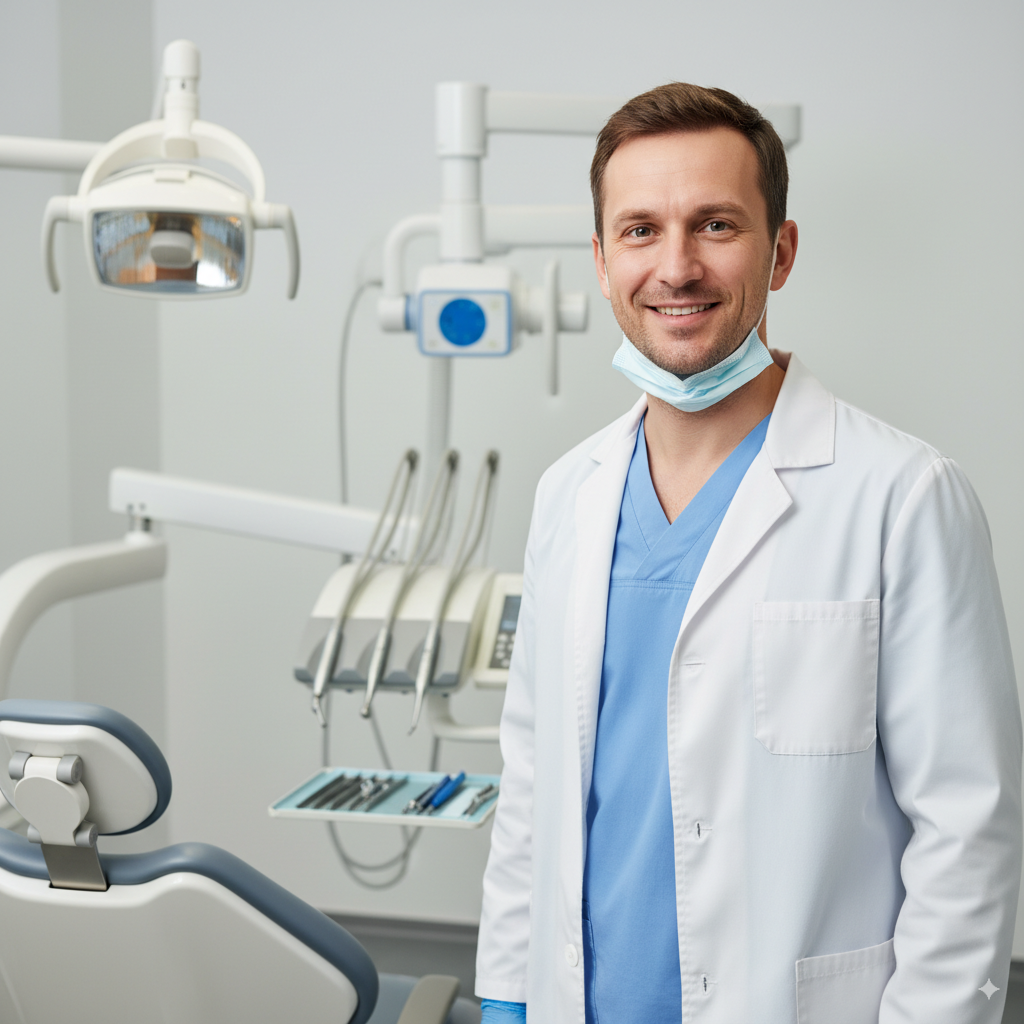
Hi, I’m Dr. Martin, the founder of BracsBasics.com. With years of experience in orthodontics, I’ve made it my mission to simplify braces care for patients of all ages. Here, you’ll find easy-to-understand advice, practical tips, and reliable resources to make your braces journey smoother, healthier, and stress-free. My goal is to help you smile with confidence every step of the way.
